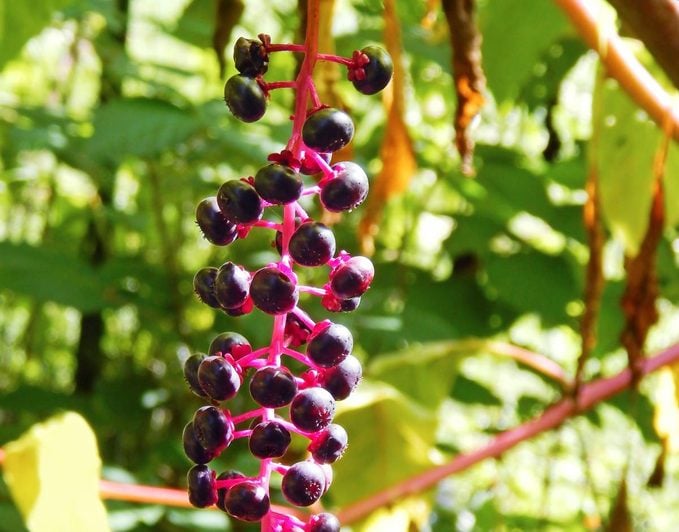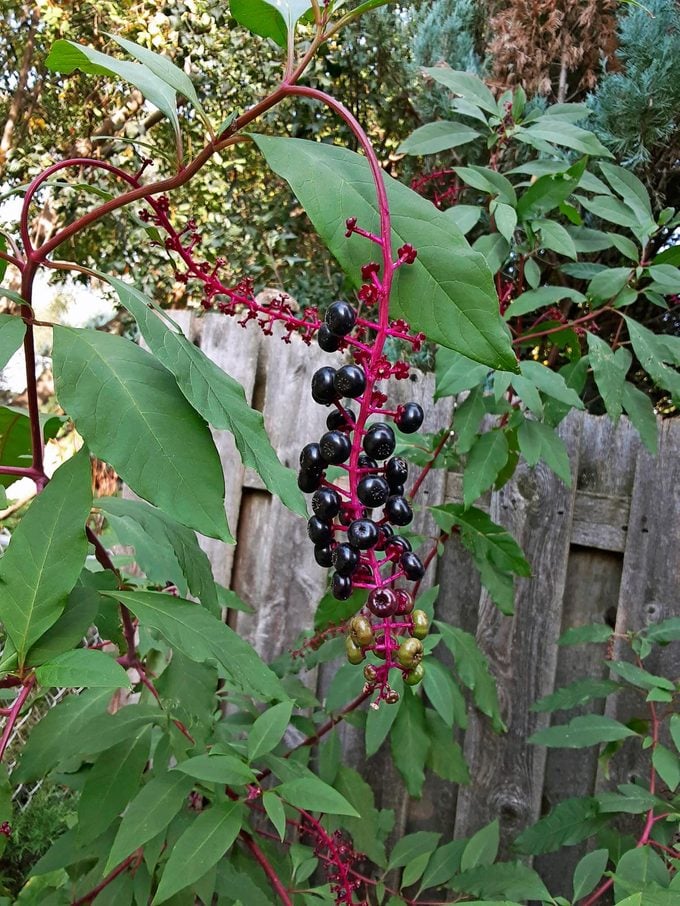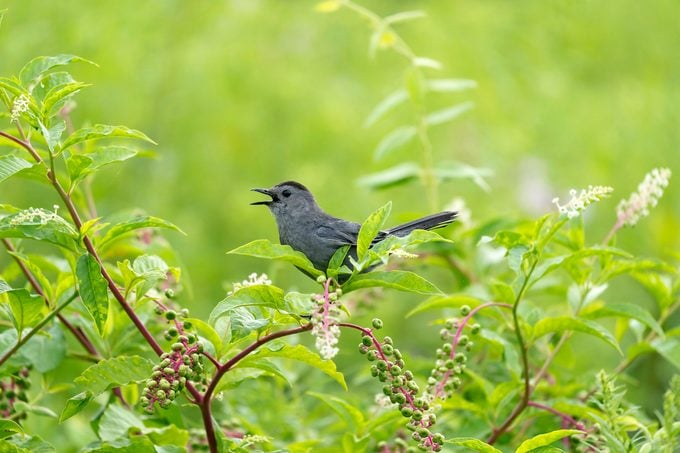Are American Pokeweed Berries Poisonous?
Updated: Jul. 22, 2024
A garden expert answers questions about American pokeweed. Find out if this shrub is a native plant and if pokeweed berries are poisonous.
Are Pokeweed Berries Safe to Eat?

“Can you identify this berry-producing shrub that appeared in my backyard? Are the fruits bird-friendly?” asks Sharyn Madison of Cortland, New York.
Melinda Myers: These beautiful mystery berries are the fruit of American pokeweed (Phytolacca americana). A visiting bird likely passed along this plant. Its berries are eaten by a variety of songbirds that hang out in thickets and woodland areas, as well as mammals, including raccoons, opossums and gray foxes. You may also find that several flies, some wasps and Halictid (sweat) bees frequently visit the flowers. However, the berries are poisonous to humans. All parts of the plant are toxic if not consumed at the right stage of growth or prepared properly.
Plant Gin Fizz Juniper for a bush bursting with berries.
Where to Find a Pokeweed Plant

Look for these plants growing in open woods, damp thickets, clearings, roadsides and disturbed sites. Pokeweed is native in much of North America (except for certain western regions), from Ontario to southern Quebec, New England and New York, west to Minnesota and south to Florida, Texas and Mexico, Melinda says.
Attract more birds with a silky dogwood shrub.
Wildlife Benefits

Gray catbirds and northern mockingbirds love this plant, but be careful. It is invasive in some regions.
“My birds give pokeweed two thumbs up!” says reader Ginger Brandt of Columbia, South Carolina.
Plant a black chokeberry shrub for berry-loving birds.
Backyard tip: Weeds torment many backyards, and simply seeing weed in a name may make you run the other way. But some plants, such as milkweed and sneezeweed, are often beneficial to wildlife and definitely worth a second look at the garden center.
How to Get Rid of Pokeweed

“We have a pokeweed plant in our yard and can’t get rid of it! We cut it down and it grows back. How can I get it out of our yard?” asks Lynda Countryman of Molalla, Oregon.
Melinda: Pokeweed is a native plant that evokes a range of reactions from birders and gardeners. Some prize this plant that feeds songbirds, while others consider it a threat to plant and animal diversity. This perennial plant has a deep taproot that can grow up to 12 inches deep and 4 inches in diameter, making it difficult to control. Young plants can be dug up, but it is difficult and not always an effective way to manage established plants. Continually cutting the plant back throughout the growing season can eventually kill it. You will need to be more persistent than the plant for this to be effective.
A total vegetation killer that kills both the tops and roots is an option, but you may need several applications and must protect nearby plants from the chemical. Cutting the plant back to the ground and applying the herbicide to the cut stem provides a more direct and contained application. As always, read and follow label directions before applying any chemical. Wear gloves, long sleeves and pants when managing the plant to avoid skin irritation.
Next, find out if milkweed is poisonous to people and pets.




















